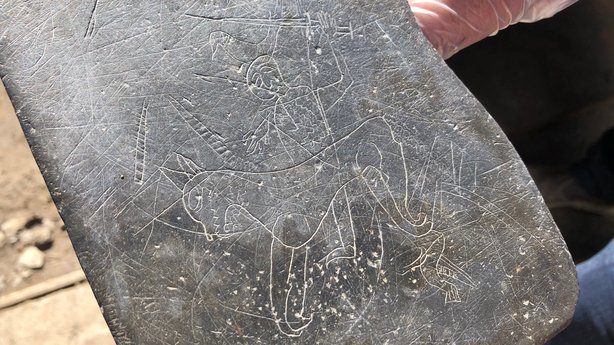Archaeologists discover part of hidden 12 Century Dublin
Archaeologists have discovered the remains of nine 12 Century houses during work being undertaken at Dean Street in the Coombe area of Dublin, Ireland's capital city. The dig is being undertaken ahead of the construction of a 234-bed hotel. The five dwellings and four outhouses would have originally been outside the old city walls of Dublin. They were preserved beneath the floors of later buildings on the site. An number of late Viking and medieval periods artefacts have been discovered, including a very well preserved drawing on slate of a man riding a horse. An ornate medieval well with steps leading to it was also identified. Conservation and analysis is now being undertaken by specialists.
Dublin (Irish: Baile Átha Cliath) is located on the east coast of Ireland, at the mouth of the River Liffey (An Life) and bordered on the South by the Wicklow Mountains (Sléibhte Chill Mhantáin). The area of Dublin Bay has been inhabited by humans since prehistoric times. The name Dublin comes from the Irish word Dubhlinn, meaning black or dark pool, which was located where the River Poddle entered the Liffey. There is some debate about when Dublin was established, but it is thought there was a Christian ecclesiastical settlement which was later expanded as a Viking one.
At the beginning in the 9th and 10th century, there were two settlements where the modern city now stands. The Viking settlement and a Gaelic settlement known as Áth Cliath. The Kingdom of Dublin became Ireland's principal city following the Norman invasion after 1169. The Norman invasion of Ireland took place in stages during the late 12th century. This was at a time when Gaelic Ireland was made up of several kingdoms, with a High King of Ireland (Irish: Ard-Rí na hÉireann) claiming lordship over all.






